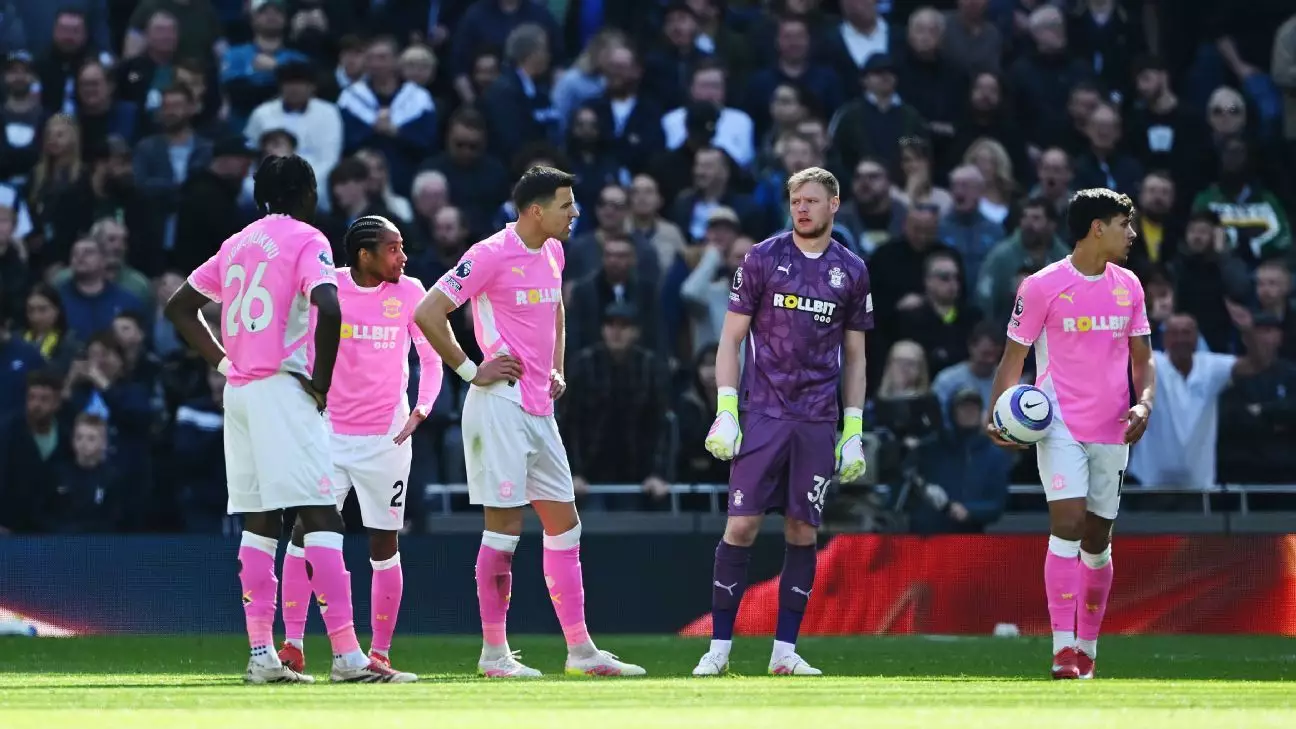In a jaw-dropping twist of fate, Southampton FC etched their name into the dark annals of Premier League history. On a day that will forever haunt supporters and players alike, the Saints became the first team to be relegated with a staggering seven matches still remaining in the season. The final blow came during a humiliating 3-1 defeat against Tottenham Hotspur, leaving fans with a bitter taste of despair and disbelief. This historic relegation not only reflects a significant failure on the club’s part but raises questions about its future direction, management structures, and commitment to rebuild.
It’s striking how quickly the narrative can shift in football. Just a few seasons ago, Southampton was a team that prided itself on fostering talent and competing in the Premier League. Fast forward to now, and they have become an example of poor management and misguided decision-making. Their unfortunate record smacks of an institutional collapse that demands urgent reassessment of what went wrong. As gloomy as it is, this is not merely a statistic—the story behind this relegation paints a broader picture of neglect and mismanagement.
Performance Dismay: A Team Out of Steer
One can’t overlook the gloomy statistics that highlight Southampton’s season. They presently stand at risk of clinching the title of the worst-performing side in Premier League history, a fate that Derby County suffered in the 2007-08 season with a mere 11 points. With their current tally far from comforting, the echoes of despair grow louder. Goalkeeper Aaron Ramsdale expressed the palpable frustration; how can a club with such resources and history become a byword for failure? The fans have shown remarkable resilience, enduring dwindling morale as they traveled across the country, only to witness continued lackluster performances.
Southampton began the season with hope. The sacking of manager Russell Martin in December was hoped to inject a fresh trajectory. Yet, the appointment of Ivan Juric has failed to elicit a revival. Winning only a single match out of 13, his management has mirrored the team’s lack of tenacity, leaving many questioning if the club is truly committed to change or if it’s merely a case of trying to medicate a deep-seated malaise instead of addressing its roots.
Lessons for the Future: Rebuilding from Ashes
The question looms: how does a club with such a rich history rebound from this catastrophic decline? Fans deserve more than empty promises of reflection and renewal. Statements like “We have to understand all of the mistakes we’ve made” feel hollow without decisive action and accountability. Juric’s comments underline a significant complacency, indicating a lack of urgency to rectify mistakes that led to one of the darkest turns in the club’s saga.
Ultimately, rebuilding is more than a theory—it requires practical execution. There’s a pressing need for a holistic approach, where the club’s management listens attentively to the supporters, examines the internal structure, and embraces a player development strategy that could restore pride and performance back to St. Mary’s.
Looking Ahead: A Flicker of Hope amidst Shadows
As Southampton prepares to face Aston Villa in their next league match, there’s little doubt that the challenge ahead is monumental. Each remaining game is not just a contest for points; they are opportunities for the players to regain some faith and stave off a record that could haunt these young talents. The road ahead is fraught with challenges, yet it is also a chance to build a resilient team aimed at bouncing back stronger.
Perhaps, in this difficult time, the club can learn from its turmoil. It is vital to focus on nurturing talent from the academy, reinforcing scouting networks, and ensuring that the managerial hiring process prioritizes adaptability and vision. The footballing community will be watching to see if Southampton can rise from the ashes, reclaim its values, and begin a new chapter that restores the pride of its loyal supporters. In the grand tapestry of football, this might be but a dark thread, but it’s also an essential step towards a brighter and more hopeful future.


Leave a Reply